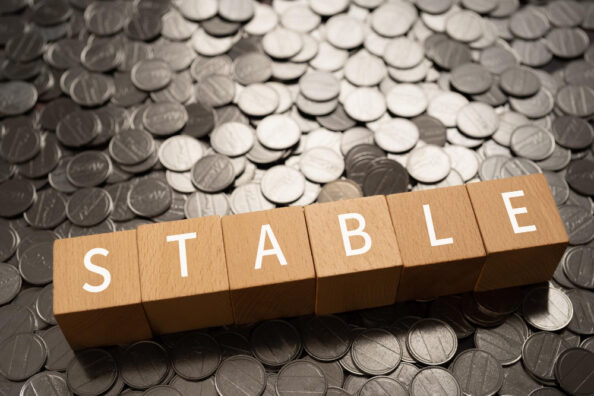
When you think of cryptocurrencies, which word comes to your mind first? This word may be “volatility”. Bitcoin was launched as a means of payment which allows for reducing the role of intermediaries in the payment process.
Indeed, it looked like a P2P version of digital cash that would enable a coherent flow of online payments between two parties without the involvement of financial institutions.
Even though Bitcoin started to gain popularity, its volatility has weakened its reliability when it comes to utilizing Bitcoin as a medium of exchange. These wild price swings have led to a groundbreaking innovation in the cryptocurrency world, known as stablecoins.
In this article, we will go deeper to understand what stablecoins are, how they work, where they are used, and what you can do with them.
Stablecoins are cryptocurrencies whose value is tied to more reliable assets. As you know, digital currencies are prone to price fluctuations. As the name implies, stablecoins are built to be stable and protect their holders’ funds from market fluctuations and risks. Thus, stablecoins help us to overcome the volatility issue.
The value of stablecoins is pegged to more steady assets such as fiat currencies, a barrel of oil, real estate, precious metals, and even other cryptocurrencies. Thus, the price of the stablecoin fluctuates with the price of the underlying asset.
Stablecoins have the advantages of both fiat money and cryptocurrencies. They are trustworthy and stable just like fiat currencies are, and immutable, secure, and transparent just like digital ones are. You can keep your stablecoins in a digital wallet and make fast transactions with low fees with them.

Even though Bitcoin is the most widely used digital currency, it is volatile like many other cryptocurrencies. For example, once Bitcoin’s price changed by 80% in a single day. Intraday fluctuations can be dramatic too. The exchange rate of Bitcoin often changes by more than 10% in just a few hours.
For a better understanding of the issue, imagine you buy a cup of coffee for $5 every morning and then start paying for it in Bitcoin. Thus, every time you buy coffee, you will spend a different amount of Bitcoin as its price is continually changing relative to dollars. In the long run, Bitcoin’s price may go up, gradually making your everyday cup of coffee relatively cheaper. However, this doesn’t suit clients and enterprises who need to plan a budget, which requires stability.
Fiat currencies are more foreseeable. Still, they have their own weaknesses. For instance, you don’t have control over your deposited savings and your bank account may be blocked; there are time delays and high transaction fees for international payments; fiat money is not the best store of value, so your funds are eroded step by step.
Here come stablecoins. They combine the steadiness of fiat money and the decentralized nature of digital currencies. Thus, stablecoins may keep the value of the cryptocurrency stable, serving as a medium of exchange and promising their holders to retain purchasing power in the short run.
Stablecoins are meant to tackle the major issue that most of the world’s popular cryptocurrencies face. The problem is that their wild price swings make it hardly possible to accept digital currencies for real transactions.
While cryptocurrencies like Ethereum or Bitcoin suffer from volatility, stablecoins tie their prices to reliable reserve currencies. Thus, their steadiness is the reason why stablecoins are widely used as a functional currency within a crypto brokerage.
For instance, traders may convert Ethereum into a stablecoin such as Tether, rather than into dollars, in the event of a market decline or crash. It takes a few minutes to avoid potential losses by turning a cryptocurrency into a stablecoin on a single platform. Moreover, stablecoins, contrary to cash gained through the banking system, are always available and accessible, no matter what day and time it is.
In addition to this, stablecoins can be used with smart contracts, which execute automatically when their conditions are fulfilled. Their stability also allows for overcoming potential disagreements when dealing with unsteady cryptocurrencies.
There are collateralized, non-collateralized, and hybrid stablecoins. They achieve price stability using different approaches, which depend on the underlying asset. Now, let’s take a closer look at the key types of stablecoins.
Collateralized Stablecoins
Collateralized stablecoins are tokens whose values are backed by specific collateral. Thus, there are fiat-collateralized, asset-collateralized, and crypto-collateralized stablecoins.
This type is the most popular one among stablecoins. As the name suggests, these coins are backed by a particular fiat currency, such as the US dollar or Euro. Each stablecoin is pegged by an asset stored in real-life reserves to support the peg. For instance, there is a Euro stored in a bank account for every Euro-backed stablecoin in circulation.
If the price of the stablecoin starts falling, the issuer can buy back coins from the market to support the peg. Accordingly, if the price of the stablecoin begins to rise, the issuer can sell new coins on the market to decrease the price.
Fiat-backed stablecoins have gained popularity owing to their simplicity. Still, they are the most centralized among stablecoins as they require a reliable third party to keep and manage the reserves.
These coins are backed by physical assets like real estate, oil, diamonds, precious metals, and beyond. Similar to other types of collateral, the price of these commodities is likely to fluctuate and may potentially lose value.
Asset-backed stablecoins enable investments in commodities that can be inaccessible in the local area. For example, gaining a gold bar and discovering a secure vault is difficult and expensive in many regions. Hence, keeping physical assets like gold or silver isn’t always a reachable plan. Nevertheless, this type of stablecoin allows its holders to exchange tokens for cash or possess the underlying tokenized asset.
As the name implies, these coins are backed by a reserve of cryptocurrency, e.g., ETH. Such an approach has several advantages over stablecoins backed by fiat currencies. For instance, it allows for getting rid of a central authority that keeps and manages the reserve. Also, it enables protection from the collapse of the fiat currency as the price of cryptocurrency backing the stablecoin is not tied to any fiat currency.
The main drawback of these stablecoins is that they are prone to suffering the same volatility as the cryptocurrency they are linked to.
Non-Collateralized Stablecoins
These stablecoins are also known as algorithmic stablecoins. As the name suggests, there are no assets that back the coins. They use complex algorithms and smart contracts to regulate the number of tokens in circulation and resist sudden changes in market conditions. Thus, the software automatically decreases supply when the price falls, and increases it when the price rises. The weakness of the approach is the complexity of algorithms. So, there is a risk that they may fail, causing a loss of value.
Hybrid Stablecoins
This type of stablecoin combines features of collateralized and non-collateralized stablecoins. Hybrid stablecoins are linked to a resource but modeled automatically. Most of the laws put limitations on such projects as they are pretty confusing to understand.
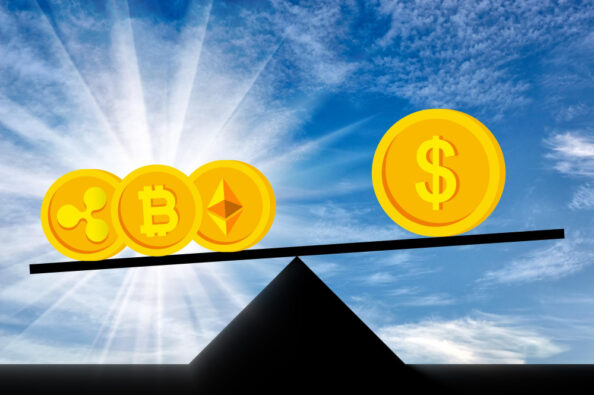
Since stablecoins are a kind of cryptocurrency, they are inescapably compared to Bitcoin and other digital currencies. Even though they are all based on the same blockchain technology, these cryptocurrencies have more differences than common features. Now, let’s discover what are the differences between stablecoins and other cryptocurrencies.
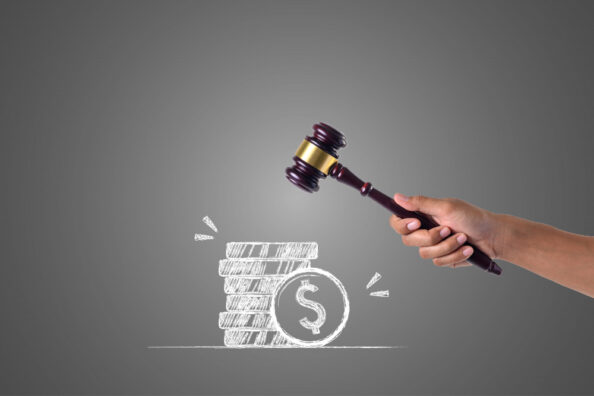
Even though stablecoins may bring substantial consumer benefits and valuable competition in the industry of payments, regulators are keeping them under scrutiny, given the rapid expansion of the $140 billion market. In October 2021, the International Organization of Securities Commissions (IOSCO) stated that stablecoins should be regulated as the infrastructure of the financial market equal to clearinghouses and payment systems. The proposed regulations affect stablecoins that are considered systemically important by legislators, i.e., those with the capability of disrupting payment and settlement transactions.
What’s more, lawmakers appeal for stricter regulations of stablecoins. For example, some of them call for regular auditing of stablecoin issuers, while others propose bank-like regulations for the sector; some want stablecoin issuers to be insured depository institutions, and others want them to comply with activity restrictions that limit affiliation with commercial entities.
However, without proper regulation, there will be higher and wider risks for the financial sector. Global stablecoin regulation should be coherent, comprehensive, flexible, risk-based, and focus on their structural features and use. Governments should take measures swiftly to eliminate fast-growing risks and protect users.

Let’s discover what you can do with stablecoins. They look like promising assets, but can we make practical use of them in real life? Fortunately, yes. Now, look at these ways how you can transfer money and earn interest with the help of stablecoins:
Stablecoins are cryptocurrencies tied to the price of another asset via algorithms or huge reserves. Now, let’s go further to understand stablecoins better.
We say their price is linked, or pegged, to another price, but what is a peg? The peg is a price that a stablecoin always strives for, regarding the asset it is tied to. For example, if it is a U.S. dollar stablecoin, that is $1.
Stablecoins can be backed by tangible assets like precious metals and by intangible ones like other cryptocurrencies. It is supposed that you can easily redeem or trade stablecoins for the value of the asset they are tied to.
So, the determining factor for any stablecoin is how the peg is maintained and what the basis for the entire system is. To put it another way, the main question here is how does the coin organizer support the value of the currency?
Tether and other central stablecoins need a custodian to make currency regulations and hold a specified quantity of collateral. Tether keeps the US dollar in a bank account and the reserve must be equal to the amount they issue to keep the order of the system. Thus, price swings are prevented.
Still, there are also decentralized stablecoins that don’t require a central authority to reach this goal. They use blockchain-based smart contracts to manage the collateral and keep order.
In comparison to other cryptocurrencies, stablecoins are safe. However, they are not risk-free, and you must be aware of them.
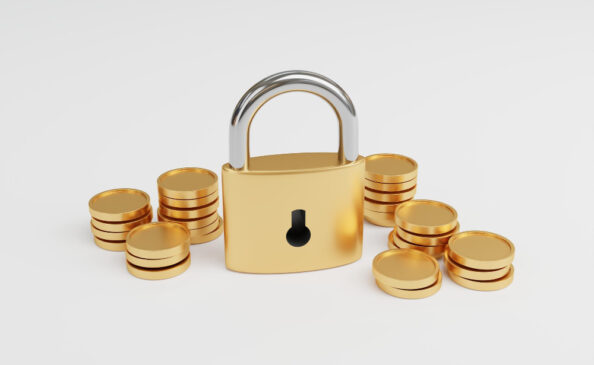
Supposing that you decided to invest in stablecoins, now it’s time to understand whether a stablecoin is safe or not.
First, you should check reports on the reserves of the issuer. Also, pay attention to exactly what is backing your stablecoin as Tether, the most popular stablecoin, appeared to back their coins mainly with commercial papers, not US dollars.
In 2021, Tether published a report on reserves and showed that nearly 76 percent of the reserves were kept as cash or its equivalents (mainly short-term corporate debt), about 13 percent were secured loans, almost 10 percent were corporate bonds, funds, and precious metals, while the rest was actual cash.
Even though these other assets may act like real cash much of the time, they are not actual cash. Most of the cash was held in short-term corporate debt, which acts in a different from cash way in an emergency. Those assets, as well as other non-cash assets, could quickly drop in value in case of the market fall, making the stablecoin less than fully reserved.
If a stablecoin doesn’t pledge to keep 100 percent of its reserves in cash, then it can’t guarantee that there will be enough cash to redeem the coins. Hence, the value of stablecoins may be far from stable.
However, Tether has reduced the amount of non-cash assets in its reserves. What is more, they are going to continue decreasing their dependency on commercial papers.
All in all, the best proof of a stablecoin’s safety is its wide acceptance as a medium of exchange.
Identify the type of stablecoin to be developed
As you already know, there are two main types of stablecoins, i.e., collateralized and non-collateralized stablecoins. So, we cannot say that one category of stablecoins dominates over the other one. If you aim to bring long-lasting stability, then you should choose algorithmic stablecoins. Otherwise, if you need to bring short-term stability where the underlying asset is trustworthy, you should prefer collateralized stablecoins.
Ask yourself the following questions to determine your requirements:
Once you answer the questions, you will clearly see the type of stablecoin that meets your requirements.
Identify the platform and technologies required to build a stablecoin
When you identify the most suitable type of stablecoin, you need to select the platform to create it. Originally, Ethereum was the only platform for developing stablecoins, but now there are hundreds of existing stablecoins and stablecoins in development.
Most of these stablecoins were running on Ethereum, but now we see many newcomers to the blockchain market. These new platforms for developing stablecoins include Tron, EOS, and beyond. There have already been projects such as EUSD, EOSDT, and CUSD (Carbon) launched on EOS. People choose EOS for creating stablecoins as it is more interoperable and has high scalability and transaction bandwidth compared with Ethereum.
With the strengths and weaknesses of the existing platforms, you can make a reasonable decision on which platform to choose. After that, you move to the next step to consider the maintenance of liquidity.

Think about the maintenance of liquidity
The entire sense of building your stablecoin may be wasted if the liquidity is lost. Follow these steps to establish maximum liquidity:
Create visual and technical designs for the system
After that, it is time to design your stablecoin. Here, the design stands for understanding the transaction flow of your stablecoin and how the whole system will work. In addition to this, you may need to create a system design that will help your users interact with the token.
For example, you may need a website or a mobile app to facilitate user interaction with the stablecoin. So, this step calls for creating screen designs for web or mobile applications. Our expert team also provides technical designs for stablecoins to represent their entire workflows.
Development, Integration of Blockchain Platform and Launching to Mainnet
When all the necessary designs are ready, it is time to develop the system. At this stage, you need to build smart contracts necessary for interacting with your stablecoin and launch nodes on the blockchain platform that you have chosen.
After you have developed the features of your stablecoin and connected them to the blockchain backend, you need to launch it on the test network. If you use the Ethereum platform to develop your stablecoin, it is easy to find numerous test nets in the market.
Ask different groups of people for assistance in checking the quality of your product on the test network and gather their feedback to fix the issues that have been discovered during the test stage. Finally, when all bugs are fixed, you can launch the stablecoin on the mainnet.
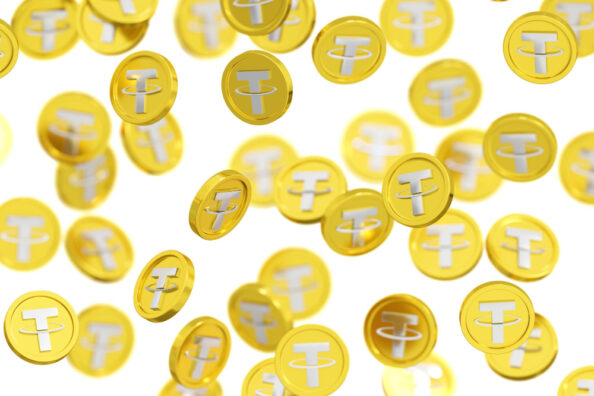
Now that you know more about stablecoins, let’s have a look at the most popular stablecoins available on the market.
Tether (USDT) is a fiat-collateralized stablecoin, which was the first to enter the crypto market. It is the most popular stablecoin, which is also the third-largest cryptocurrency, only behind Bitcoin (BTC) and Ether (ETH). What is more, it is the most liquid stablecoin as it has the greatest number of transactions globally. However, it was revealed that most of Tether’s assets were not US dollars but commercial papers (short-term corporate debt), certificates of deposits (CDs), and US Treasuries.
USD Coin (USDC) is a fiat-backed stablecoin that runs on the Ethereum blockchain and is linked to the value of the US dollar. Every USDC in circulation is backed by cash, bonds, and other financial assets held by the founding group.
Binance USD (BUSD) is one of the largest stablecoins by market cap. It is a fiat-collateralized stablecoin backed by the US dollar. Even though BUSD was named after the crypto exchange platform Binance, its issuer is Paxos as all the US dollars backing up the stablecoin are kept in Paxos’ vaults.
Dai (DAI) is a cryptocurrency-collateralized stablecoin. It runs on the Ethereum blockchain and is pegged to Ether, while Ether’s value is tied to the US dollar. DAI is a decentralized stablecoin as it uses incentives and smart contracts as the mechanism to support the peg.
PAX Gold (PAXG) and Tether Gold (XAUt) are asset-collateralized stablecoins. As the names suggest, each stablecoin in circulation is backed by a troy ounce of gold stored in vaults. Their holders can redeem their shares for physical metal.
Ampleforth (AMPL) is an algorithmic stablecoin designed to help investors execute crypto trades by enabling a flow of tokens to exchanges. To maintain price stability, Ampleforth regulates its token supply.
Stablecoins strive to tackle the formidable issue of volatility that the cryptocurrency market faces. As long as there are significant price fluctuations, it will be almost impossible to build a feasible new financial industry based on digital money. When issuers peg crypto tokens to the US dollar or gold, they find a way to establish a certain level of confidence in an unpredictable business. Currently, exchangers, investors, lenders, and traders are making use of stablecoins to smooth their activities.
Still, many stablecoin issuers remain mysterious when it comes to revealing and auditing their reserves to confirm they are able to support their tokens in circulation. If any of these platforms crashed, confidence in the entire sector could be damaged.
Don’t hesitate to contact our experts if you have any questions or bright ideas.